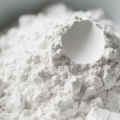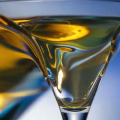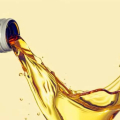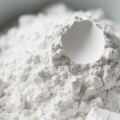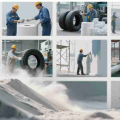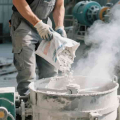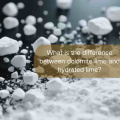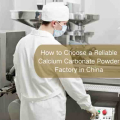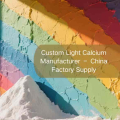- Welcome to China Calcium Carbonate Manufacturer
- WeChat:15078781000
Calcium carbonate is the third most used mineral filler in rubber products, right after carbon black and silica. With growing environmental concerns about carbon emissions, this eco-friendly material is gaining popularity. Let’s break down how it works in simple terms.
Why Use Calcium Carbonate in Rubber?
Cost Saver: Adds bulk to rubber, reducing production costs without hurting quality.
Performance Booster: Makes rubber stronger, more tear-resistant, and longer-lasting.
Types of Calcium Carbonate for Rubber
Not all calcium carbonates work the same. Here’s a quick guide:
1. Ground Calcium Carbonate (GCC)
Role: Mainly a cheap filler (up to 250% of rubber weight).
Best For: Basic rubber products needing low cost.
Pros: High purity, easy to mix, stable.
2. Precipitated Calcium Carbonate (PCC)
Role: Semi-strengthening filler.
Best For: Improving flexibility and surface finish.
Pros: Uniform particles, better shine than GCC.
3. Activated Calcium Carbonate
Role: Strength enhancer.
Best For: Replacing expensive materials like silica.
Pros: Superb dispersion, boosts tear resistance.
4. Nano Calcium Carbonate
Role: High-performance additive.
Best For: Premium rubber goods (e.g., tires, seals).
Pros: Ultra-fine particles, improves multiple properties.
6 Surprising Superpowers of Calcium Carbonate
1. Fire Safety
Calcium carbonate fights smoke during fires. Tiny particles react with toxic fumes, turning them into harmless salts. Tip: Use ultra-fine grades (<3000 mesh) for best results.
2. Cooling Effect
Adding calcium carbonate helps rubber cool faster during production. Example: PVC with 25% calcium carbonate heats 3x faster than pure PVC.
3. Anti-Stick Agent
Ever noticed how plastic wrap doesn’t cling? Thank calcium carbonate! It prevents rubber sheets from sticking together.
4. Eco-Friendly Degradation
Rubber with calcium carbonate breaks down better in soil. Water and air create tiny holes, letting microbes digest the material faster.
5. Color Control
High-quality calcium carbonate can replace costly white pigments. Pro tip:
Blue-tinted GCC cancels yellow hues
Red-tinted GCC works with warm colors
6. Bubble Management
In foam rubber, calcium carbonate controls bubble size. Too much? Bubbles collapse. Too little? Uneven texture. Balance is key!
3 Rules for Choosing the Right Grade
Particle Size Matters
<1000 mesh: Basic filling
1000–3000 mesh: Moderate strengthening
5000+ mesh: High-performance
Surface Treatment
Treated calcium carbonate bonds better with rubber, improving strength by 100% in some cases.
Match Your Needs
Budget product? Use GCC
Need strength? Try activated/nano grades
Special colors? Pick tinted variants
Real-World Applications
Tires: Nano grades improve grip
Shoe Soles: PCC adds flexibility
Industrial Hoses: GCC cuts costs
Key Takeaways
Calcium carbonate makes rubber cheaper, safer, and greener.
Choose GCC for cost, nano grades for performance.
Particle size and surface treatment decide results.
